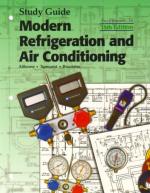|
This section contains 579 words (approx. 2 pages at 300 words per page) |

|
Throughout the centuries, people have devised many methods of manipulating the heat and humidity of the air surrounding them. Ancient Egyptians, Indians, Greeks, and Romans hung wet mats over doors and windows (wind blowing through the mats was cooled by evaporation), while their rulers were cooled by slave-operated fans. Leonardo da Vinci invented a water-driven fan in the middle ages. In the nineteenth century, the textile industry used various devices to humidify factory air; South Carolina physician John Gorrie (1803-1855) invented an air-conditioning and refrigeration machine; and In New York City, both Carnegie Hall and the Stock Exchange building had air-cooling systems around the turn of the century.
None of these systems was truly effective, however. The breakthrough came in 1902 from a young mechanical engineer named Willis H. Carrier (1876-1950). Carrier had grown up on a farm in New York and then attended Cornell University on...
|
This section contains 579 words (approx. 2 pages at 300 words per page) |

|


